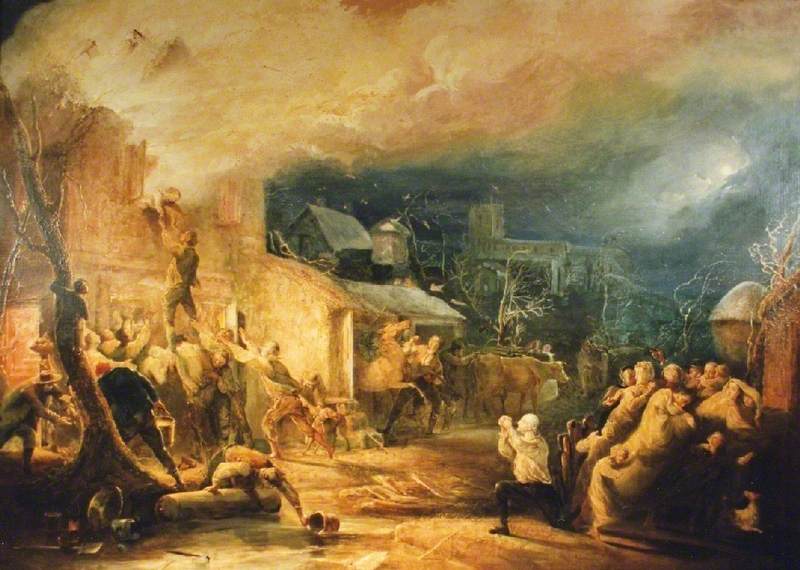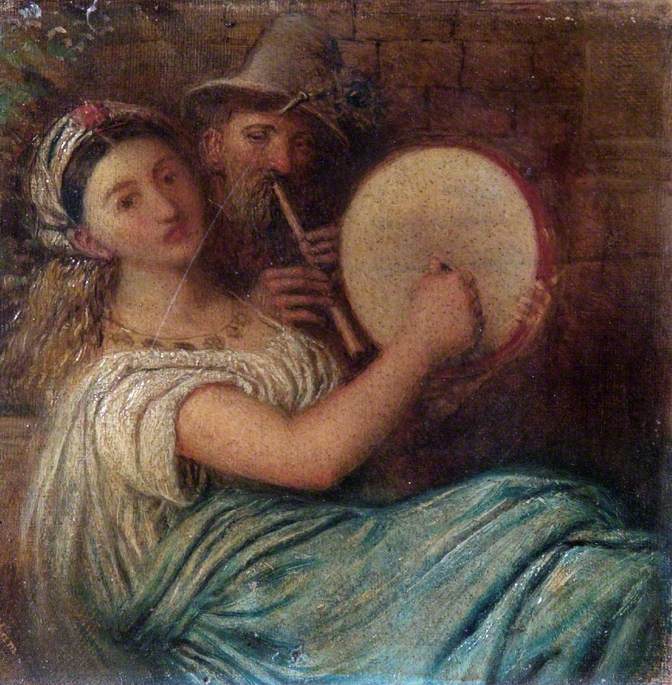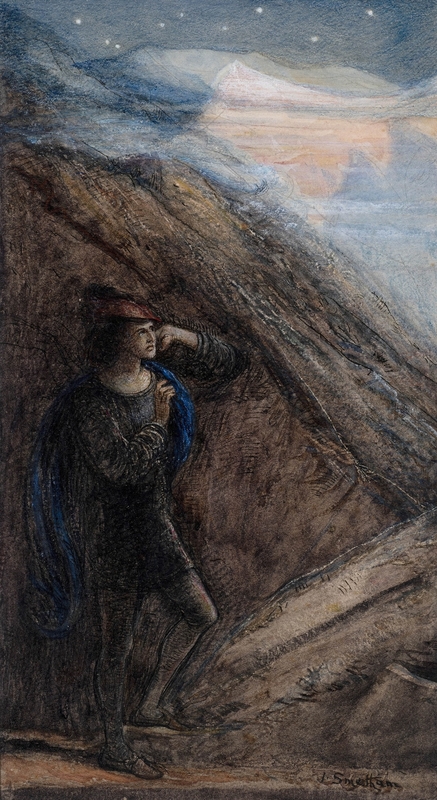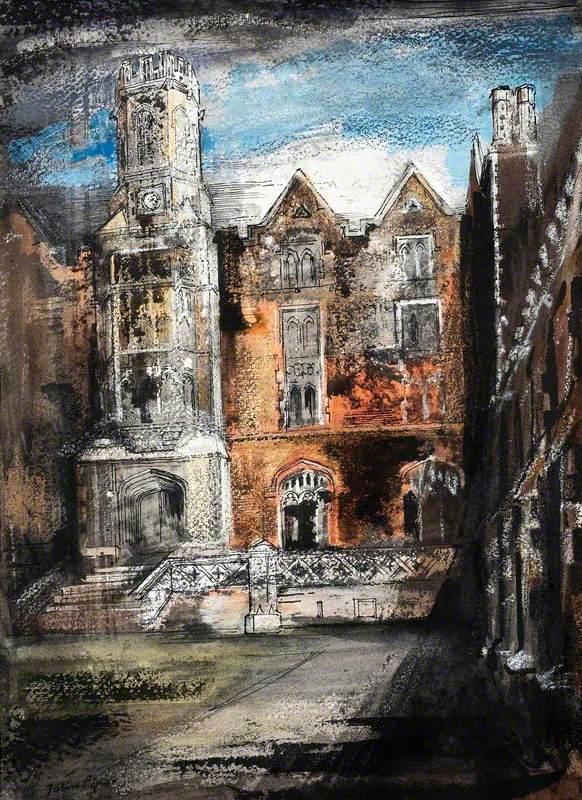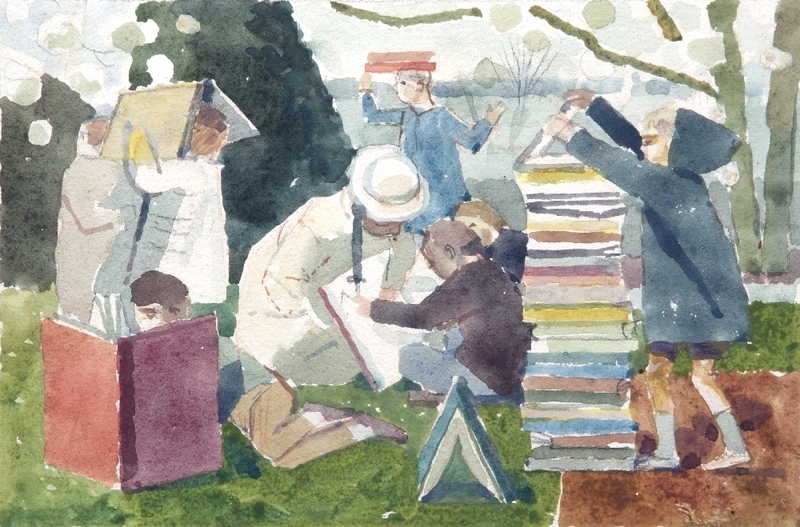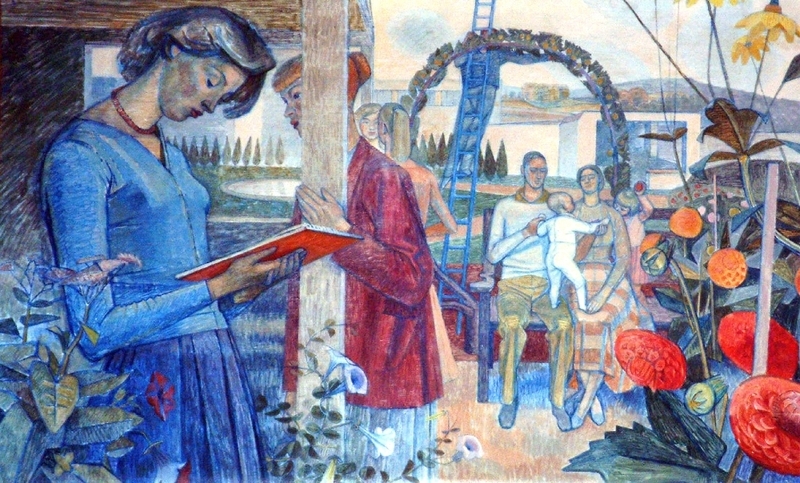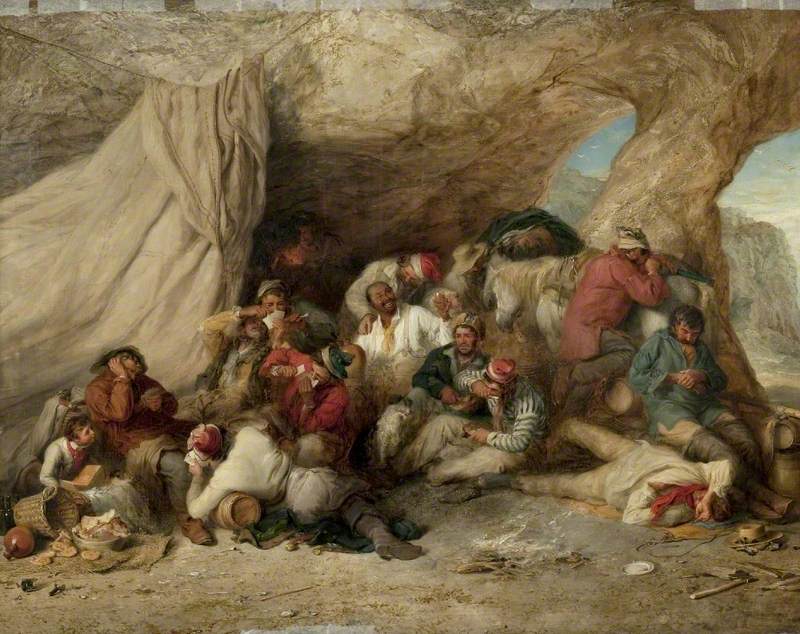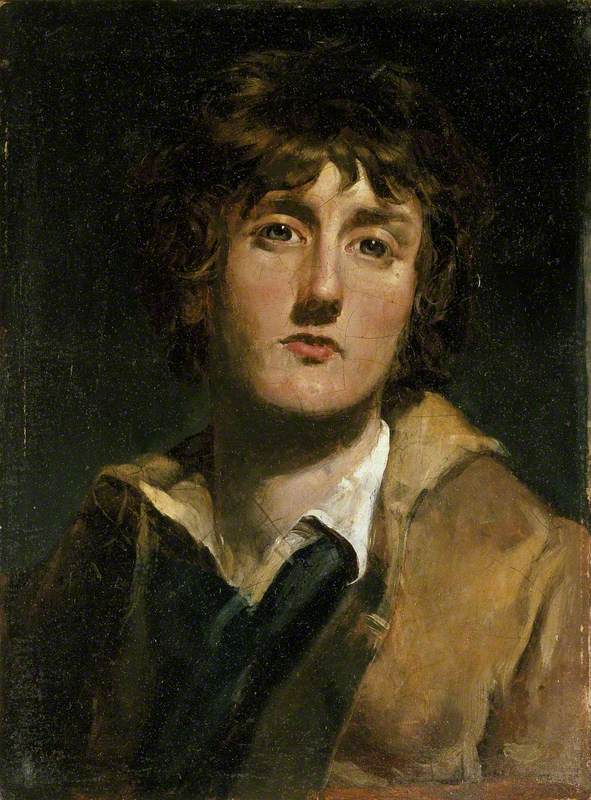Our art collections are broad in content, but all relate to either The Methodist Church of Great Britain, or wider church or institutional history. Within these boundaries, our material includes work by unknown Pre-Raphaelite James Smetham, and notable twentieth century artists Evelyn Dunbar and John Piper.
Art Unlocked is an online talk series by Art UK in collaboration with Bloomberg Philanthropies. This Curation is based on a talk by Thomas Dobson, Collections, Digitisation and Research Officer at The Oxford Centre for Methodism and Church History, on 24th May 2023. You can watch a recording of the talk on Art UK's YouTube channel.
-
Is not this a brand plucked from the burning?
Is not this a brand plucked out of the fire? 1840Our collections stem from the Methodist heritage of the campus, including the earliest and latest portraits of John Wesley created during his lifetime. We also hold material created for The Methodist Church exploring the life of John Wesley, and the influential Methodists who followed. One such artwork is Henry Perlee Parker’s “Is not this a brand plucked out of the burning?” which depicts John Wesley’s legendary rescue from a fire at his home in Epworth.
This painting has hung in every headquarters of the (Wesleyan) Methodist Church in Britain since its creation, most recently at 25 Marylebone Road.
Henry Perlee Parker (1795–1873)
Oil on canvas
H 160 x W 220 cm
The Oxford Centre for Methodism and Church History
-
Woman with a Tambourine (Irene with a Tambourine)
Woman with a Tambourine (Irene with a Tambourine) c.1864–1868The Smetham Collection is one of our Methodist related collections, having been deposited at Westminster College by descendants of the artist in the 1990s. An associate of the Pre-Raphaelites, work by James Smetham bears many of the hallmarks of work by his friends, including Ruskin and Rossetti. Despite this, Smetham’s work was unpopular during his lifetime, and has remained under-utilised and under-studied ever since.
James Smetham (1821–1889)
Oil on canvas
H 14 x W 14.1 cm
The Oxford Centre for Methodism and Church History
-
The Rose of Dawn
The Rose of Dawn 1870sThis difference in popularity between Smetham and other pre-raphaelites is often attributed to the religious imagery he depicted - often drawn from his Methodist beliefs. Indeed, many of Smetham’s clients were from Methodist backgrounds, and it was the Methodist Westminster College where Smetham found employment and, more importantly for him, where he met his wife.
Whilst this work would appear to depict one such religious scene, its inspiration is actually found in poetry: its title is a quote from a work by Alfred, Lord Tennyson. An inscription detailing more of this verse was found underneath this preparatory work during conservation in 2020.
James Smetham (1821–1889)
Watercolour on paper
H 30 x W 16 cm
The Oxford Centre for Methodism and Church History
-
Westminster College
Westminster College 1948One of the most important works in our collections, this painting by John Piper depicts Westminster College as it was following the end of the Second World War. The buildings are shown as blackened and bomb damaged, matching recollections of students and staff having to step around bomb craters when they returned in October 1945. Funded by alumni and students, there are few records about its commission. There are records, however, of the importance of depicting the College during the war, and their joy at the finished work. It has remained important to the College ever since, hanging in the Principals Office or the College Board Room - both as a reminder of the institution’s history, and of its resilience.
John Piper (1903–1992)
Pen, chalk & gouache
H 46 x W 36 cm
The Oxford Centre for Methodism and Church History
-
Preliminary Sketch
Preliminary Sketch before 1957The last of the ‘Emergency Training Colleges’, Bletchley Park College was founded among the remnants of the world famous codebreaking site in 1948. Having fully established itself by the mid-1950s, Evelyn Dunbar was commissioned to work as the College’s ‘Artist in Residence’, and to create a large mural for the College’s Dining Hall. Suffering from ill health, this mural was never created, with only this handful of sketches showing us what might have been.
Evelyn Mary Dunbar (1906–1960)
Oil & watercolour on paper
H 19.5 x W 29.5 cm
The Oxford Centre for Methodism and Church History
-
Omega
Omega 1957Despite not being able to create the large scale mural she had intended, Dunbar did manage to create two panels for the college at Bletchley - ‘Alpha’ and ‘Omega’. Finishing her work in 1958, they are among the last works created by Evelyn, who died in 1960. Relocating in 1966, these works now form focal points of the Library created for the renamed ‘Lady Spencer Churchill College’, today the Wheatley campus of Oxford Brookes University.
It is these preliminary works and panels which have inspired research into Dunbar, and the subsequent creation of the Centre’s “Dunbar Collection”.
Evelyn Mary Dunbar (1906–1960)
Oil on panel
H 80.3 x W 130 cm
The Oxford Centre for Methodism and Church History
